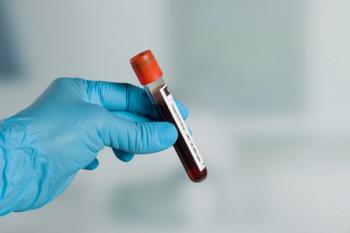
Long-Term Treatment with Apremilast Reduces Psoriatic Arthritis Symptoms
Drug decreases enthesitis and dactylitis by blocking the production of cytokines that promote inflammation.
Drug decreases enthesitis and dactylitis by blocking the production of cytokines that promote inflammation.
New data from 3 trials indicate that apremilast (Otezla) ameliorates key symptoms of psoriatic arthritis for at least 104 weeks.
Pooled data from the PALACE 1, PALACE 2 and PALACE 3 trials showed that the oral phosphodiesterase 4 inhibitor significantly reduced enthesitis and dactylitis in most patients. Indeed, about 50% of patients in the 3 studies achieved a Maastricht Ankylosing Spondylitis Enthesitis Score (MASES]) of 0 and about 75% achieved a dactylitis count of 0.
All of the PALACE trials pitted apremilast — either 20 mg or 30 mg twice daily — against placebo for 24 weeks in patients who suffered active psoriatic arthritis after treatment with disease-modifying antirheumatic drugs (DMARDs). Participants were allowed to continue taking methotrexate, other DMARDs or DMARD combinations throughout the study period.
The trial data show much longer results because patients began with the option of taking apremilast for up to 4 years, and the researchers who ran the trial have recently completed an analysis of the 2-year data, which they presented at the 2015 Congress of the European League Against Rheumatism.
Collectively, patients who received apremilast 20 mg began the trials with a mean MASES of 4.6 and saw it drop an average of 55.1%. MASES dropped to 0 in 51.5% of the patients. The story was much the same for patients who received apremilast 30 mg.
They started with a mean MASES score of 4.3 and saw a mean change of -57.5%. Scores fell to 0 in 48.7% of patients who were still taking apremilast at 54 weeks. As for dactylitis, patients in the apremilast 20 mg group began with mean counts of 3.2 and saw a mean decline of 75.8%.
Counts fell to 0 in 72.9% of patients who took the drug for 2 years. Patients in the apremilast 30 mg group began with mean dactylitis counts of 3.4 and saw a mean decline of 80% during the 2-year study period. Counts fell to 0 in 77.5% of patients.
Apremilast seems to reduce enthesitis and dactylitis by blocking the production of cytokines that promote inflammation. The drug’s anti-inflammatory action also produces clinically significant improvement to swollen and tender joints, according to results from the PALACE 3 trial.
Most trial patients tolerated apremilast well. The most common adverse events were diarrhea, nausea and other gastrointestinal ailments. There were no cases of tuberculosis. Previous reports from apremilast trials have noted that the drug can trigger depression in some patients and considerable weight loss (up to 10% of body weight) in a significant minority of users.
Unlike other treatments for psoriatic arthritis, apremilast is an oral medication. Patients typically prefer oral medications to those that are implanted under the skin, but implanted medications do reduce patient compliance issues.
Apremilast was first approved by the US Food and Drug Administration for the treatment of active psoriatic arthritis in March, 2014. The agency expanded the drug’s label in September, when it approved it for the treatment of plaque psoriasis. It is currently undergoing trials against other chronic inflammatory diseases, including rheumatoid arthritis.
Newsletter
Stay informed on drug updates, treatment guidelines, and pharmacy practice trends—subscribe to Pharmacy Times for weekly clinical insights.












































































































































































































